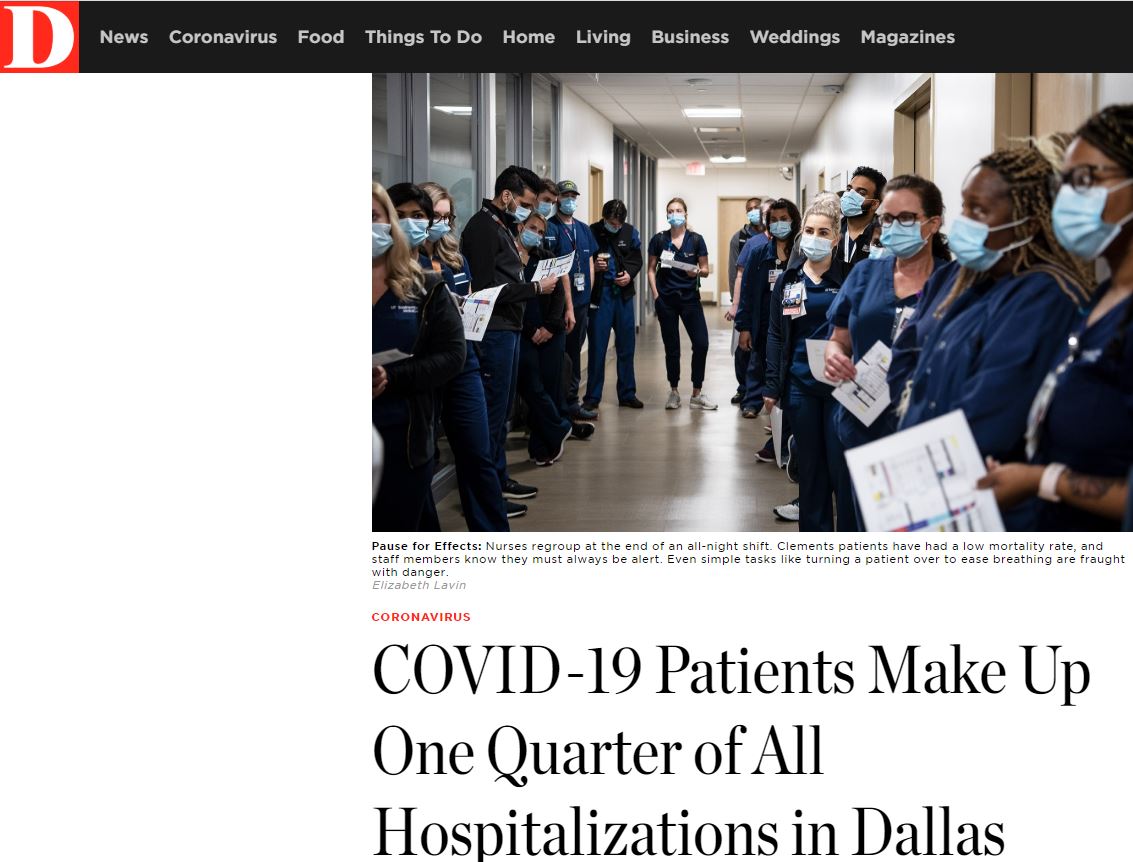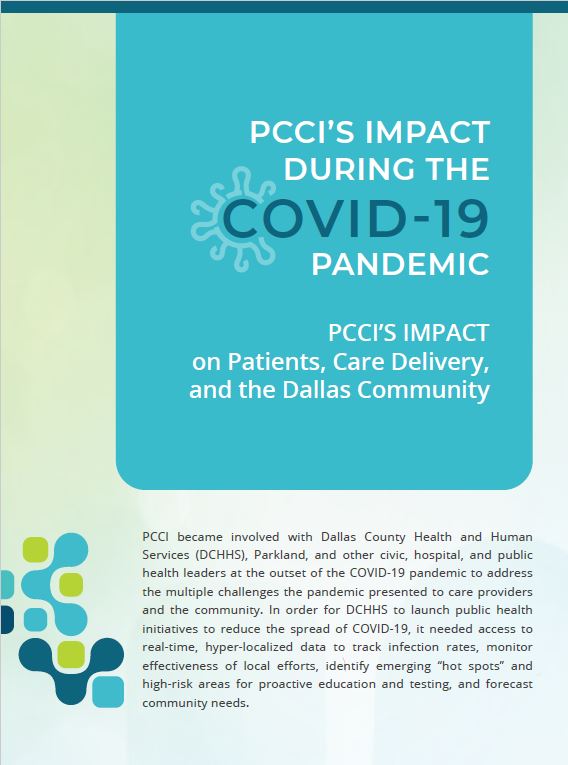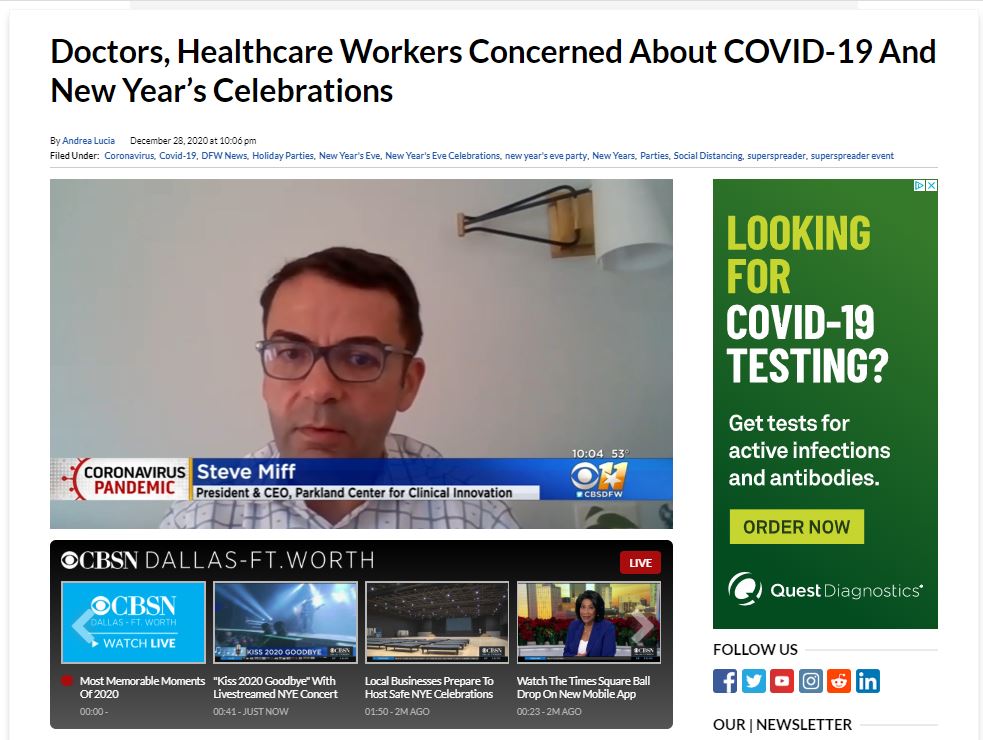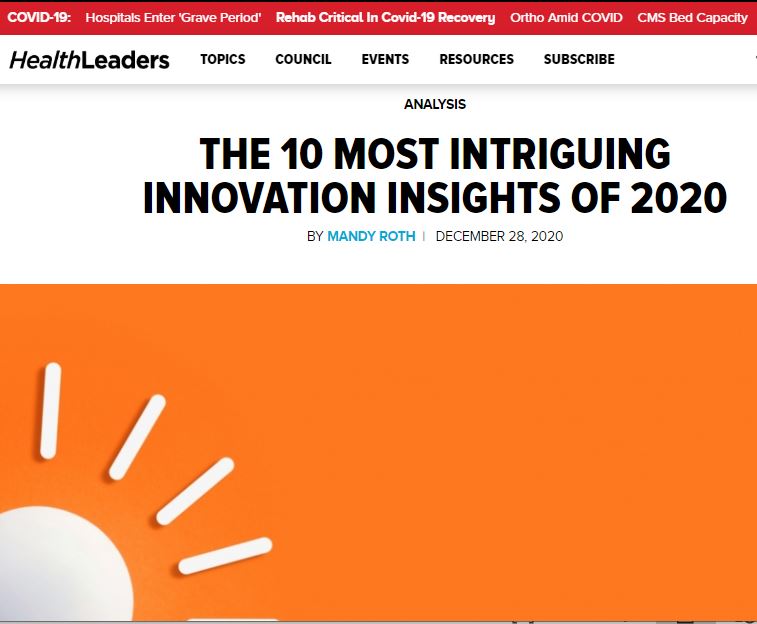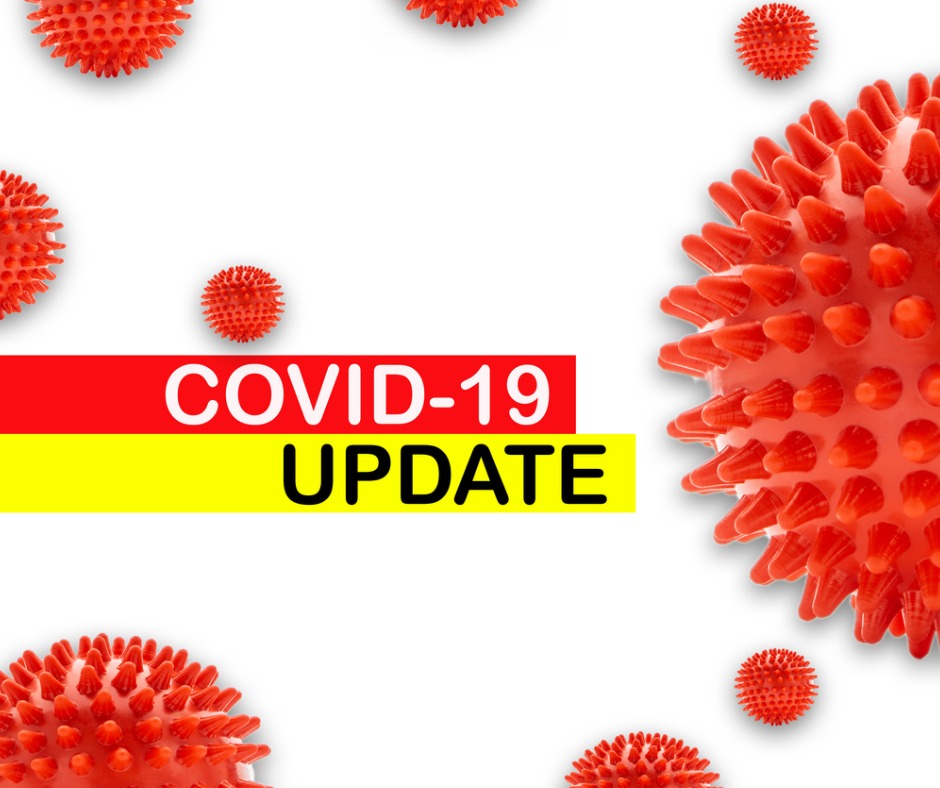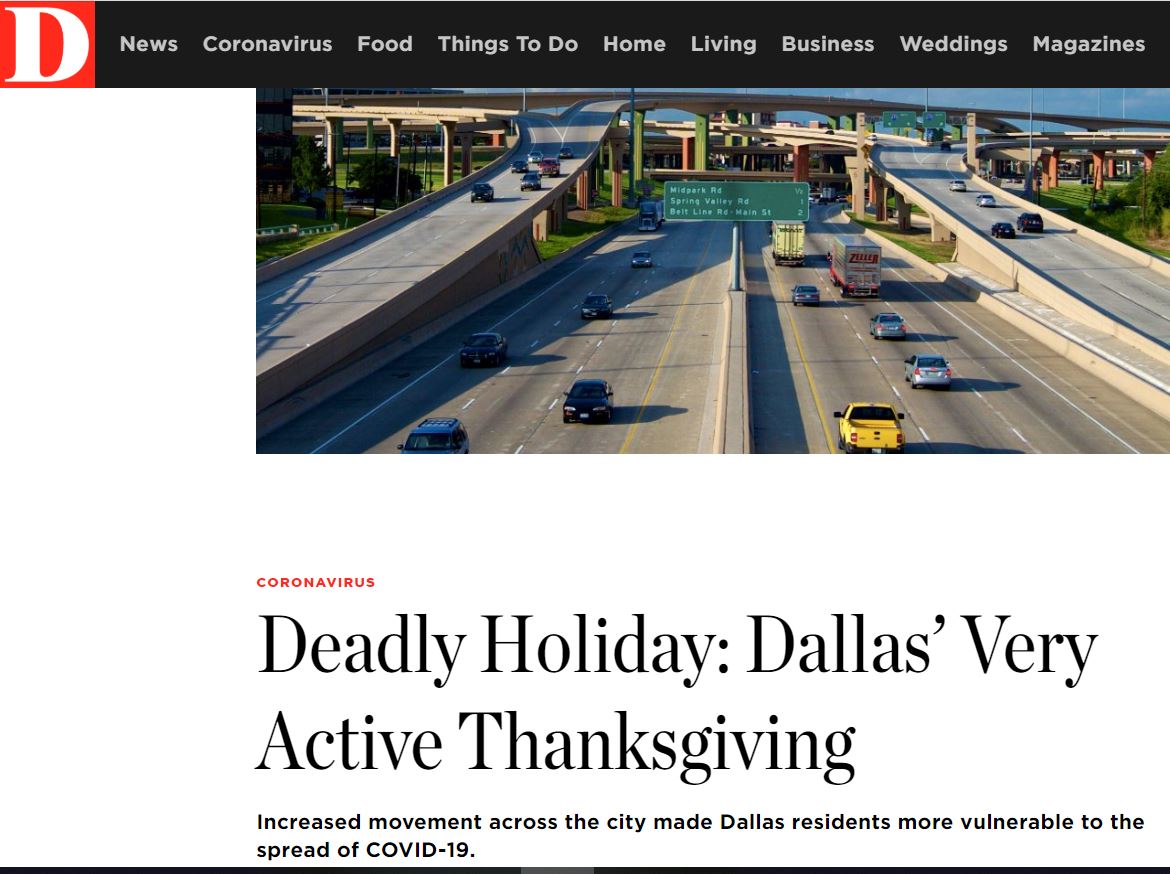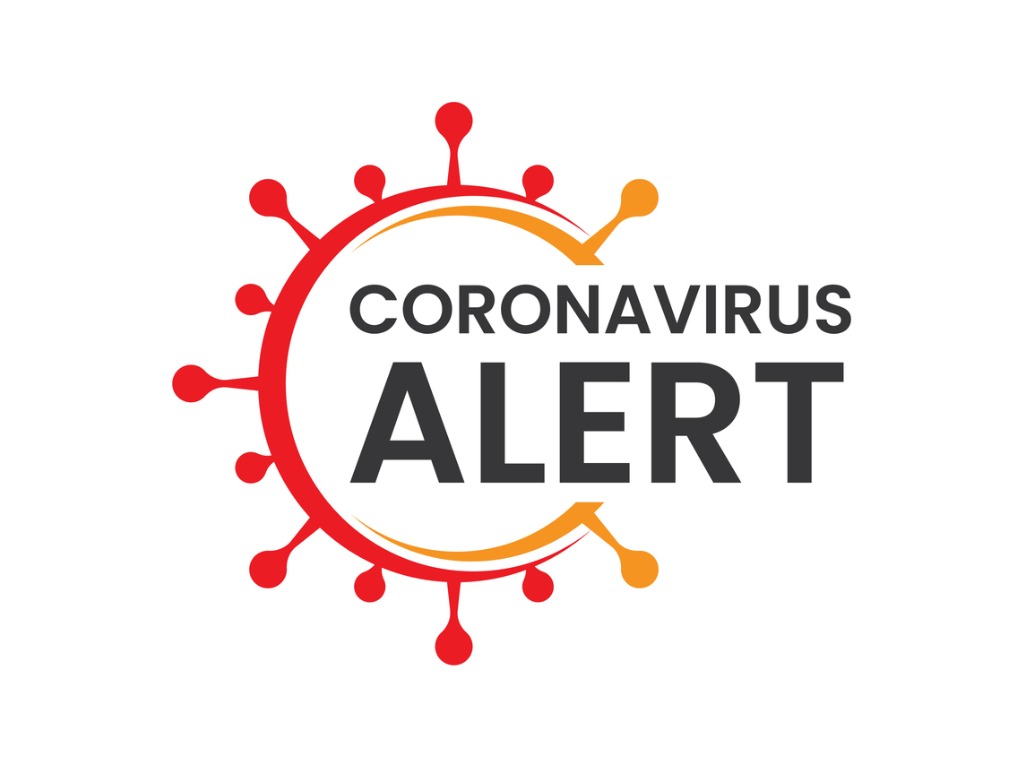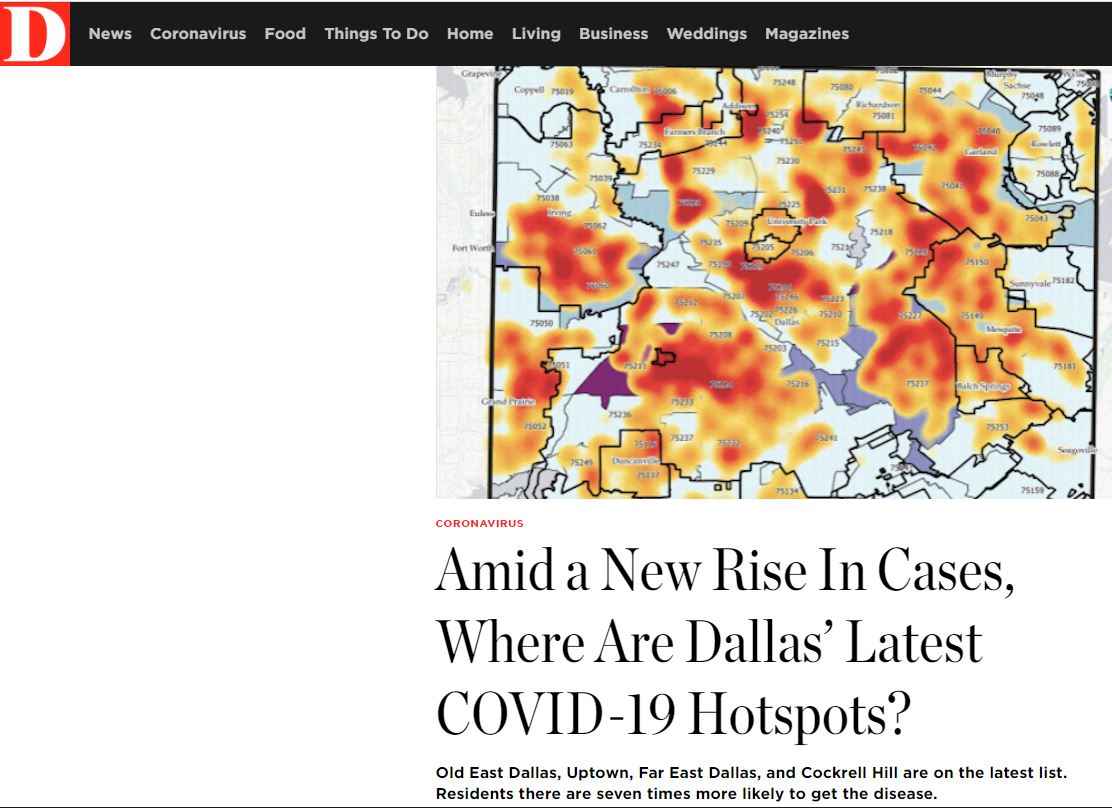In this story from DCEO, state data says there are only 18 ICU beds available in Dallas County and just six in Tarrant County. This story highlights PCCI’s COVID-19 Vulnerability Index and how it has shown exponential growth in risk using its Vulnerability Index tool. For the full story, click on the image below:
PCCI Impact: Taking the Fight To COVID-19 in 2020
COVID-19’s outbreak in the Dallas-area was a challenge PCCI faced head-on, making an impact on the community with its approach to providing innovative tools to help the public and healthcare leaders better understand the pandemic and mitigate its harm. Below is a short excerpt of PCCI’s COVID-19 efforts, for a much more detailed report, contact us for a copy of PCCI’s Annual Impact Report, where PCCI’s actions are shared in much greater detail.
To get the full Annual Impact Report, please click HERE, select “other” and in the message box, add “Annual Impact Report” to receive your electronic copy.
In the news: CBS Dallas Shares PCCI’s COVID-19 Concerns Over Holiday Celebrations
PCCI’s research on COVID-19 was cited by CBS Dallas in a new story covering the hazards of celebrating during the holidays. Steve Miff, CEO of PCCI, was interviewed for this story at also included insights from PCCI’s COVID-19 Vulnerability Index. Go to the :50 second mark for PCCI’s inclusion. Click the image below to view the video and story:

In the news: Steve Miff’s perspectives in HealthLeaders ’10 Most Intriguing Innovation Insights of 2020′
As part of the HealthLeaders’ Executive Round Table, Steve Miff was included in a story highlighting the “10 Most Intriguing Innovation Insights of 2020.” The HealthLeaders Executive Round Table is an exclusive panel of innovation executives who share insights that will help health leaders build the healthcare system of the future. Here is the story link and section including Steve. Please click the image below to read the full story:
COVID-19 Risk Skyrockets as Dallas Shatters Highest Levels Recorded by PCCI’s Vulnerability Index
DALLAS – In the month following the Thanksgiving Holiday, PCCI’s COVID-19 Vulnerability Index (VI) has recorded values smashing the highest levels ever recorded for Dallas County. Specifically, ZIP codes 75211, 75243, and 75228 posted vulnerability index ratings of 157.96, 121.14 and 104.75, respectively, shattering the highest value of 100 previously recorded in July, which set the VI value benchmark.
 PCCI’s Vulnerability Index indicates that the increases are driven by high mobility levels (people leaving their homes) during Thanksgiving and an increase in confirmed cases. PCCI
PCCI’s Vulnerability Index indicates that the increases are driven by high mobility levels (people leaving their homes) during Thanksgiving and an increase in confirmed cases. PCCI
experts warn that if mobility during the Christmas and New Year’s holidays continues to be high, COVID-19 infection growth could continue at a hazardous rate.
“COVID-19 has been a challenge and, for many, a personal tragedy. The jump over the past month for many ZIP codes above the prior July peak underscores the risk it presents as many celebrate the holidays. The key to keep in mind over the next few months is to maintain patience and diligence as the community begins vaccinations – continue social distancing, wearing masks, diligent hand washing, and other recommendations of public health authorities,” said Thomas Roderick, PhD, Senior Director of Data and Applied Sciences at PCCI.
Launched in June, PCCI’s Vulnerability Index determines communities at risk by examining comorbidity rates, including chronic illnesses such as hypertension, cancer, diabetes and heart disease; areas with a high density of populations over the age of 65; and increased social deprivation such as lack of access to food, medicine, employment and transportation. These factors are combined with dynamic mobility rates and confirmed COVID-19 cases where a vulnerability index value is scaled relative to July 2020’s COVID-19 peak value.

The Vulnerability Index reports that in December, the ZIP code with the highest vulnerability value continued to be 75211, around Cockrell Hill. This area has been a high-risk area since the launch of PCCI’s Vulnerability Index ranking shot up 62.7 points from November to December.
The ZIP code 75243, East of U.S. Highway 75 and intersected by Interstate 635, has experienced a huge increase in its VI value, soaring 85.7 points, going from 35.4 in November to 121.14 in December, making this area the number two most at-risk ZIP code in Dallas County. Another ZIP Code breaking its VI benchmark from July was 75228. This area, in East Dallas bordered by Interstates 30 and 635 and intersected by Highway 12, saw its VI value grow from 74.33 in November to 104.75 in December, making it the third most at-risk region in Dallas County.
Also, ZIP Codes 75216 and 75150 also saw their VI value grow over 50 points, raising their values to 97.96 and 99.00 respectively.
The PCCI COVID-19 Vulnerability Index can be found on its COVID-19 Hub for Dallas County at: https://covid-analytics-pccinnovation.hub.arcgis.com/.
Data Sources:
To build Vulnerability Index, PCCI relied on data from Parkland Health & Hospital System, Dallas County Health and Human Services Department, the Dallas-Fort Worth Hospital Council, U.S. Census, and SafeGraph.
About Parkland Center for Clinical Innovation
Parkland Center for Clinical Innovation (PCCI) is an independent, not-for-profit, healthcare intelligence organization affiliated with Parkland Health & Hospital System. PCCI leverages clinical expertise, data science and social determinants of health to address the needs of vulnerable populations. We believe that data, done right, has the power to galvanize communities, inform leaders, and empower people.
###
“Building Connected Communities of Care” Book Excerpt – Readiness Assessment Use Case
Following is an excerpt from PCCI’s book, “Building Connected Communities of Care: The Playbook For Streamlining Effective Coordination Between Medical And Community-Based Organizations.” This is a practical how-to guide for clinical, community, and government, population health leaders interested in building connected clinical-community services.
This section is from Chapter 2, “The Readiness Assessment.” This is a critical step in building connected communities of care as the readiness assessment uncovers the clinical and social needs in the community along with provider and Community-Based Social Service Organizations (aka Community-Based Organizations ((CBOs))) readiness to support care coordination activities that will address the needs of all stakeholders. A readiness assessment utilizes quantitative and qualitative data to provide both the breadth and depth of the required understanding to design and implement a CCC.
PCCI and its partner Healthbox, offers readiness assessments as a service. If you and your organization are interested, go here for more information: https://pcci1.wpengine.com/connected-communities-of-care/.
###
HOW PCCI USED ITS READINESS ASSESSMENT TOOL TO LAY THE GROUNDWORK FOR THE DALLAS IEP
In 2012, shortly after receiving funding from the Communities Foundation of Texas, PCCI developed its PCCI Readiness Assessment and began the process of identifying clinical, social, and technological needs in the Dallas market, along with a list of potential Partner and Participant organizations to form the initial IEP. The following describes some of the key PCCI findings across the five requirements resulting from that exercise.
Target Clinical/Behavioral Health Conditions
PCCI’s Readiness Assessment recommended an initial target of up to 10 clinical/behavioral health conditions. The Clinical Advisory Group then pared that number down to three or four clinical/behavioral health conditions based on an analysis of the following:
• Prevalence rates of chronic diseases at Parkland and in the Dallas community at large
• Desired alignment with nationwide Health Information Exchange (HIE) efforts
• Data from surveys and semi-structured interviews with local clinical and CBO leaders
• Interventions that were available and deemed to be effective
Based on these factors, the Dallas Clinical Advisory Group unanimously decided that diabetes, Congestive Heart Failure (CHF), and Hypertension (HTN) would be the initial, prioritized conditions. In addition, the Clinical Advisory Group determined that behavioral health, pediatric asthma, and Chronic Obstructive Pulmonary Disease (COPD) should be targeted in later implementation phases.
Target Social Needs that Impact Clinical Outcomes
Within the Parkland community, the Stemmons Corridor, South Dallas, Southwest Dallas, and Southeast Dallas were all home to populations with the highest medical needs. These same areas had high incidences of the three targeted, chronic health conditions identified in the first readiness assessment requirement. These same areas also had a high proportion of adults with less than a high school diploma and the highest levels of poverty in Dallas. The areas of Southwest Dallas, Southeast Dallas, and South Dallas had correspondingly low per-capita incomes and high unemployment. Additionally, large numbers of households in all four areas were on the Supplemental Nutrition Assistance Program (SNAP/food stamps). Based on the in-depth interviews with clinical and CBO leaders, the top five unmet social needs are described in Table 2.1.

Population That Would Be Targeted by the IEP
Parkland’s outpatient population is disproportionately indigent and vulnerable. The population characteristics of interest included (1) demographics, (2) insurance, (3) clinical conditions, (4) barriers to healthcare, (5) unmet medical needs, (6) unmet social needs, (7) Parkland service utilization patterns, and (8) possible information-sharing concerns.
To gather the necessary information, PCCI conducted surveys with clients at CBOs and with patients at Parkland clinics. The survey data showed the following:
• Clinical Conditions. HTN and diabetes were among the top chronic medical conditions reported by clients/patients.
• Demographics. Client/patient educations levels were low, and most surveyed clients and outpatients fell below the federal poverty level.
• Insurance. Most clients/patients had either Parkland Community Health Plan insurance or no insurance.
• Healthcare Barriers. The top three barriers to healthcare were (1) the inability to pay for care, (2) transportation problems, and (3) lack of health insurance.
• Unmet Health Needs. The top three unmet health needs were (1) dental care, (2) vision care, and (3) transportation for healthcare services.
• Unmet Social Needs. The top three unmet social needs were (1) transportation, (2) financial assistance for rent or utilities, and (3) assistance in applying for insurance.
• Information Sharing. Survey results indicated that nearly 90% of patients were comfortable sharing information about themselves and their care with healthcare providers and CBOs participating in the Dallas IEP.
Organizations and Potential Users of the CCC Model
By profiling the CBOs active in the Parkland area, the PCCI Readiness Assessment aimed to define the functional requirements, user-training needs, and governance model that would achieve optimal alignment. An understanding of the organizational settings also aided in developing a strong value proposition benefiting each CBO and their service populations. Based on the survey data, the CBOs were diverse and varied by size, services provided, technical capacity, and client populations served. There was also a wide range of potential users within organizations, including volunteers, case workers, community health workers, and directors. As a result, users had different education and training backgrounds, often with limited prior experience using—and interpreting—health information. The majority of CBOs provided case management, daily living skills training, job-seeking assistance, and substance abuse counseling. Most CBOs wished to exchange medical and social Information to better serve their clients. Information deemed especially valuable included (1) scheduled appointments, (2) medication lists, (3) inpatient discharge instructions, and (4) insurance eligibility.
Develop Use Cases for the IEP
The development of a library of use cases illuminated how the use of an IEP could potentially result in a better clinical or social outcome for the patient. In addition to the series of interviews with leaders at Parkland and CBOs covering a range of different program types and client populations, PCCI also conducted “deep-dive” focus groups with leadership and frontline staff from 15 CBOs (52 attendees). These meetings fostered a rich exchange on at least 20 different scenarios in which an IEP could potentially be used, as well as barriers and enablers to using the platform. Most CBOs wanted the ability to track clients, identify services for which their clients qualified, and view (1) past and current referrals and resources provided, (2) demographic information, (3) relevant medical history, (4) standard documentation required by Parkland or social service agencies, and (5) client/patient insurance coverage.
The discussions with community and clinical leaders generating the list of “uses” resulted in five CCC use-case categories: (1) background information (e.g., demographic information, insurance coverage); (2) service eligibility (e.g., service eligibility identification); (3) service history (e.g., relevant medical history, current medications, past service enrollments); (4) service planning, coordination, and delivery (e.g., service request/referral at other agencies, client encounters at other agencies, medical equipment, or dietary needs); and (5) research and reporting (e.g., research study participation). Each use case incorporated the interactions between healthcare providers and CBOs and addressed one or more requested functional requirement.
###
Please contact PCCI today, if you are interested in a readiness assessment at: https://pcci1.wpengine.com/contact/.
Also, you can register your team for our Executive Book Club where you can and receive a complimentary set of “Building Connected Communities of Care” books with a consultation from one of our experts, go to: https://pcci1.wpengine.com/playbook/.
Blog: Lean on Your Connected Community of Care in Times of Crisis
By Keith C. Kosel, PhD, MHSA, MBA
Parkland Center for Clinical Innovation
We’ve all experienced crises in our lives. They may be personal in nature (e.g., involving our interpersonal relationships), organizational (e.g., relating to our employment or retirement income) or nature-made (e.g., floods, tornados, or the COVID-19 pandemic). When crises hit our communities, the impacts can be widespread and far-reaching. Healthcare providers and community-based organizations (CBOs) are called upon to provide more rapid and extensive care and support to the community than is otherwise the norm. A well-established and highly functioning Connected Community of Care (CCC), as is the case here in Dallas, Texas, can provide a tremendous strategic and tactical advantage over non-connected peers.
 Since 2014, the Parkland Center for Clinical Innovation (PCCI) has led an effort to bring together several large healthcare systems and a number of regional social-service organizations such as food banks, homeless assistance associations, and transportation service vendors, along with over 100 smaller CBOs (i.e., neighborhood food pantries, crisis centers, utility assistance centers) and area faith-based organizations to form the Dallas CCC. Over time, civic organizations, such as the Community Council of Greater Dallas, Dallas County Health and Human Services (DCHHS), and select academic institutions have begun to participate in various community-wide projects under the Dallas CCC umbrella. Central to the success of the Dallas CCC are the partnerships that have been formed between the CBOs and a number of local healthcare systems (Parkland Health & Hospital System [Parkland], Baylor Scott & White Health, Children’s Medical Center, Methodist Health System, and Metrocare Services), clinical practices, and other ancillary healthcare providers serving the Dallas metroplex. These partnerships have proved essential in building a truly comprehensive and functional network aimed at improving both the health and well-being of Dallas residents.
Since 2014, the Parkland Center for Clinical Innovation (PCCI) has led an effort to bring together several large healthcare systems and a number of regional social-service organizations such as food banks, homeless assistance associations, and transportation service vendors, along with over 100 smaller CBOs (i.e., neighborhood food pantries, crisis centers, utility assistance centers) and area faith-based organizations to form the Dallas CCC. Over time, civic organizations, such as the Community Council of Greater Dallas, Dallas County Health and Human Services (DCHHS), and select academic institutions have begun to participate in various community-wide projects under the Dallas CCC umbrella. Central to the success of the Dallas CCC are the partnerships that have been formed between the CBOs and a number of local healthcare systems (Parkland Health & Hospital System [Parkland], Baylor Scott & White Health, Children’s Medical Center, Methodist Health System, and Metrocare Services), clinical practices, and other ancillary healthcare providers serving the Dallas metroplex. These partnerships have proved essential in building a truly comprehensive and functional network aimed at improving both the health and well-being of Dallas residents.
Connecting these various entities and forming a two-way communication pathway is an electronic information exchange platform termed Pieces™ Connect, which allows for real-time, two-way sharing of information pertaining to an individual’s social and healthcare needs, history, and preferences. The information exchange platform is the glue that holds the physical network together and provides one of the mechanisms to disseminate information from public health and healthcare entities to social service providers in the community. It allows the individual community resident, via the CBO, to become better informed about important health issues, such as routine vaccinations or preventive care, such as social distancing and proper mask usage during a pandemic.
Until recently, the primary mission of the Dallas CCC focused on addressing residents’ social determinants of health (SDOH) issues through providing community resources (e.g., food assistance, housing, transportation) to improve the lives of Dallas County residents. While this mission has become even more critical during the COVID-19 pandemic, the work of the Dallas CCC has also evolved to include identifying COVID-19 sites within the County and directing community outreach efforts to help stem the rapid spread of the virus.
The Dallas CCC has provided an innovative model of community governance and cooperation to impact the consequences of the COVID-19 outbreak. From the first days of the pandemic, PCCI has been working with Parkland and DCHHS to help reliably identify and quantify the geographic location and incidence rates of positive COVID-19 cases within Dallas County. This problem is especially challenging when considering vulnerable populations and the transitory nature of these residents in inner-city communities. Working with data provided by DCHHS, the Dallas-Fort Worth Hospital Council, and CBOs, PCCI built a series of dynamic geo-maps that were able to identify, at the neighborhood and block level, the location of hotspots of positive COVID-19 cases as well as attendant mortality rates. In addition to flagging at-risk patients and populations, the model continues to be used by public health and civic leaders to establish locations for testing sites within the city of Dallas based on COVID-19 incidence and community need.
With the establishment of the hot spotting, the next step was to get that information, along with general infection prevention protocols, in the hands of local CBOs to help raise awareness and slow the spread of the virus. With the aforementioned information in hand, public health workers have been able to develop targeted communications and tactical strategies to improve containment efforts through community-wide awareness and educational messaging. By connecting local CBOs and faith-based organizations with public health workers and clinicians, the Dallas CCC is facilitating effective contact tracing and the implementation of care plans for high-risk individuals in a more efficient and scalable manner.
The value of the CCC communication network linking healthcare providers and CBOs cannot be underestimated, as it represents a highly effective and efficient mechanism to disseminate leading practice information aimed directly at high-risk populations. We have seen first-hand that communications delivered to community residents through familiar food pantries, homeless shelters, and places of worship are much more effective than community-wide public information campaigns broadcast via radio or television. This increased effectiveness is based on the fact that many of these at-risk individuals frequent the CBOs on a regular basis for essential services and these individuals know and trust the CBO staff delivering the information. From one-on-one conversations to displaying infographic posters and take-away educational leaflets, CBOs provide a ready avenue to communicate with at-risk individuals in the communities they serve.
As mentioned, early work in Dallas County is beginning to demonstrate the value of CCC in facilitating contact tracing. In this case, the challenge is not simply identifying the location of positive COVID-19 cases but having the ability to connect those cases to other individuals within the neighborhood or community who may have come in contact with the infected individual, all while working in an environment where individuals frequently move from one location to another. Having a well-established communication system at the local neighborhood level can be extremely helpful in identifying contacts and potential contacts. It is well-known that many individuals in impoverished, underserved neighborhoods are reluctant to speak with individuals they don’t know or trust, especially if those individuals are affiliated with government agencies, no matter how well-intentioned the agency personnel may be. Staff members at local faith-based organizations and CBOs frequented by these vulnerable residents are a highly effective resource for identifying inter-personal relationships and connecting with those individuals, which is something that has proved challenging for public health staff when working outside of a CCC environment. In Dallas, CBOs, public health and civic staffers, as well as medical student volunteers have all been partnering to help facilitate the contact tracing process with positive results.
CCC’s can materially improve the health and well-being of a community’s residents, especially in times of crises. The take-away lesson is clear. If you already have a CCC, lean on it to help you through crises impacting your community. If you don’t have a CCC, now is the time to begin the process of establishing one in your community. Even with the challenges that the current pandemic is generating, it is possible to begin building your CCC. Start small and gradually increase the CCC’s scope and scale; don’t be in a rush to grow. The most important thing is to take the plunge and begin the journey!
 About the author
About the author
Dr. Keith Kosel is a Vice President at Parkland Center for Clinical Innovation (PCCI) and is author of “Building Connected Communities of Care: The Playbook for Streamlining Effective Coordination Between Medical and Community-Based Organizations,” a guide that brings together communities to support our most vulnerable. At PCCI, Keith is leveraging his passion for – and extensive experience in – patient safety, quality, and population health by focusing on understanding social determinants of health and the impact of community-based interventions in improving the health of vulnerable and underserved populations.
In The News: D CEO Healthcare’s Thanksgiving Cautionary Tale Using PCCI Data
D CEO Healthcare, Dallas’ leading business and healthcare media network, has run a story featuring PCCI’s Vulnerability Index for COVID-19 in Dallas County. This story shares PCCI’s mobility findings during Thanksgiving that were similar to 2019, and gives caution to the upcoming Christmas holiday. To read the whole story, click on the image below:
High Thanksgiving Mobility Adds To COVID-19 Threat, As PCCI’s Vulnerability Index Observes Dramatic Risk Increase in Dallas
DALLAS – As of November, Parkland Center of Clinical Innovations’ (PCCI) Vulnerability Index observed significant increases in vulnerability to COVID-19 infection in Dallas County as new cases rise affecting the Vulnerability Index (VI) value for some of the most at-risk areas of Dallas County. More troubling, is the 0.47% year-over-year in mobility during the Thanksgiving holiday, which is a similar rate compared to pre-pandemic Thanksgiving in 2019.
 “PCCI analysis indicates a systemic increase in people leaving their home in the two-week period around Thanksgiving. Paired with the dramatic increase in the Vulnerability Index, our community will be challenged through the December holidays and into the first part on 2021,” said Thomas Roderick, PhD, Senior Director of Data and Applied Sciences at PCCI.
“PCCI analysis indicates a systemic increase in people leaving their home in the two-week period around Thanksgiving. Paired with the dramatic increase in the Vulnerability Index, our community will be challenged through the December holidays and into the first part on 2021,” said Thomas Roderick, PhD, Senior Director of Data and Applied Sciences at PCCI.
Launched in June, PCCI’s Vulnerability Index determines communities at risk by examining comorbidity rates, including chronic illnesses such as hypertension, cancer, diabetes and heart disease; areas with high density of populations over the age of 65; and increased social deprivation such as lack of access to food, medicine, employment and transportation. These factors are combined with dynamic mobility rates and confirmed COVID-19 cases where a vulnerability index value is scaled relative to July 2020’s COVID-19 peak value.
The Vulnerability Index reports that in November (See Table 1), the ZIP code with the highest vulnerability value continued to be 75211, around Cockrell Hill. This area has been a high-risk area since the launch of PCCI’s Vulnerability Index.

The ZIP code 75204, which is northeast of downtown Dallas and intersected by U.S. Highway 75, now has the second highest VI value in Dallas County. The area has seen a rapid increase in its vulnerability since July when its VI value was outside the top ten most at-risk ZIP codes. Additionally, since October, this ZIP code had the biggest jump in its VI value in Dallas County, increasing 43.83 (See Table 2).
In general, the top five most vulnerable ZIP codes showed the most extreme increases and exceeded the highest values in as of November (See Table 2). The next five ZIP codes had growth but remain at a moderate VI levels. All ten ZIP codes had increased year-over-year mobility and reflect the COVID-19 case counts that have increased generally across the county.
“Overall, what we are seeing is the increase in confirmed COVID-19 cases and mobility drive an increase in vulnerability in Dallas County,” said Dr. Roderick. “Mobility and socioeconomic deprivation are highly correlated and a potential target for community and public health interventions. Socioeconomic factors affecting mobility include crowded living conditions, type and industry of work, especially client-facing jobs or crowded work environments.”
The PCCI COVID-19 Vulnerability Index can be found on its COVID-19 Hub for Dallas County at: https://covid-analytics-pccinnovation.hub.arcgis.com/.
Data Sources:
To build Vulnerability Index, PCCI relied on data from Parkland Health & Hospital System, Dallas County Health and Human Services Department, the Dallas-Fort Worth Hospital Council, U.S. Census, and SafeGraph.

About Parkland Center for Clinical Innovation
Parkland Center for Clinical Innovation (PCCI) is an independent, not-for-profit, healthcare intelligence organization affiliated with Parkland Health & Hospital System. PCCI leverages clinical expertise, data science and social determinants of health to address the needs of vulnerable populations. We believe that data, done right, has the power to galvanize communities, inform leaders, and empower people.
###
In The News: DCEO Explores PCCI’s October COVID-19 Vulnerability Index
The new update to PCCI’s COVID-19 Vulnerability Index (and the animated heat map) is explored in a story by DCEO Healthcare. PCCI executives give expert insights into the data and information being tracking for COVID-19 in Dallas County. The story captured the outstanding work PCCI is doing to help the people of Dallas County fight the virus. Read it on the image below:

